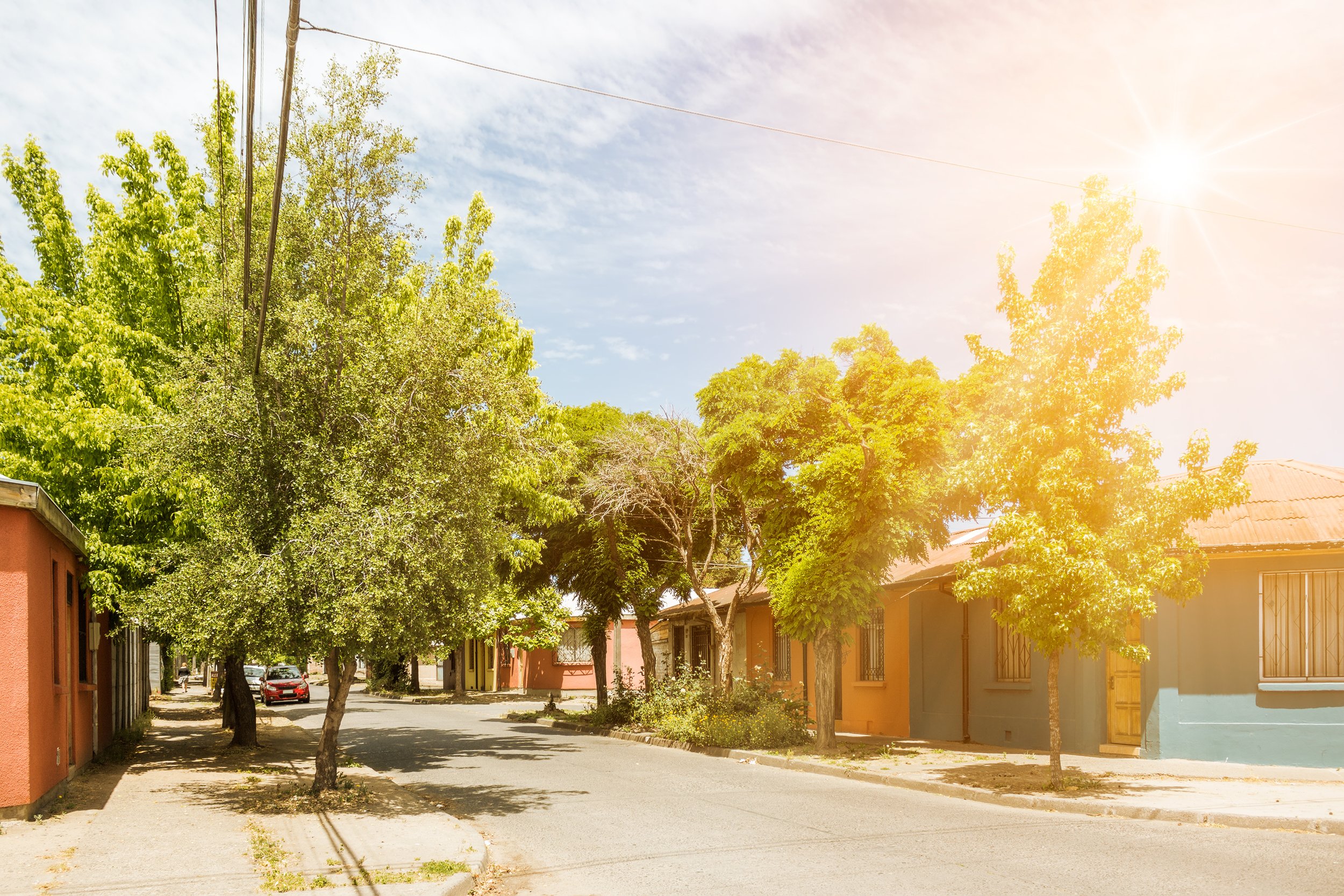
What can my community do to reduce Vulnerability to extreme heat?
In the short term, the most effective way to cool a city is to add more plants, especially trees that provide shade. Here are some ideas:
Plant more trees along roads. This can be done by the city government. The branches and leaves will provide shade and reflect sunlight before it reaches the dark asphalt.
Encourage property owners to let plants (and ultimately trees) grow. Vegetation and trees cool the air more than grass. They also provide other benefits that grass does not, including stabilizing the soil to prevent erosion during storms, and habitat for animals, including many endangered or threatened species. Importantly, this does not cost money. Some cities have had public campaigns to encourage people to do this.
Encourage green roofs on buildings. City government can incentivize property owners to do this. Green roofs can be up to 40 degrees cooler than conventional roofs, and widespread adoption can reduce citywide temperatures by as much as 5 degrees (according the EPA).
Use land efficiently. A major part of this is minimizing the use of large parking lots, which absorb lots of heat. Garage parking takes up much less land, and concrete parking garages are cooler than asphalt parking lots.